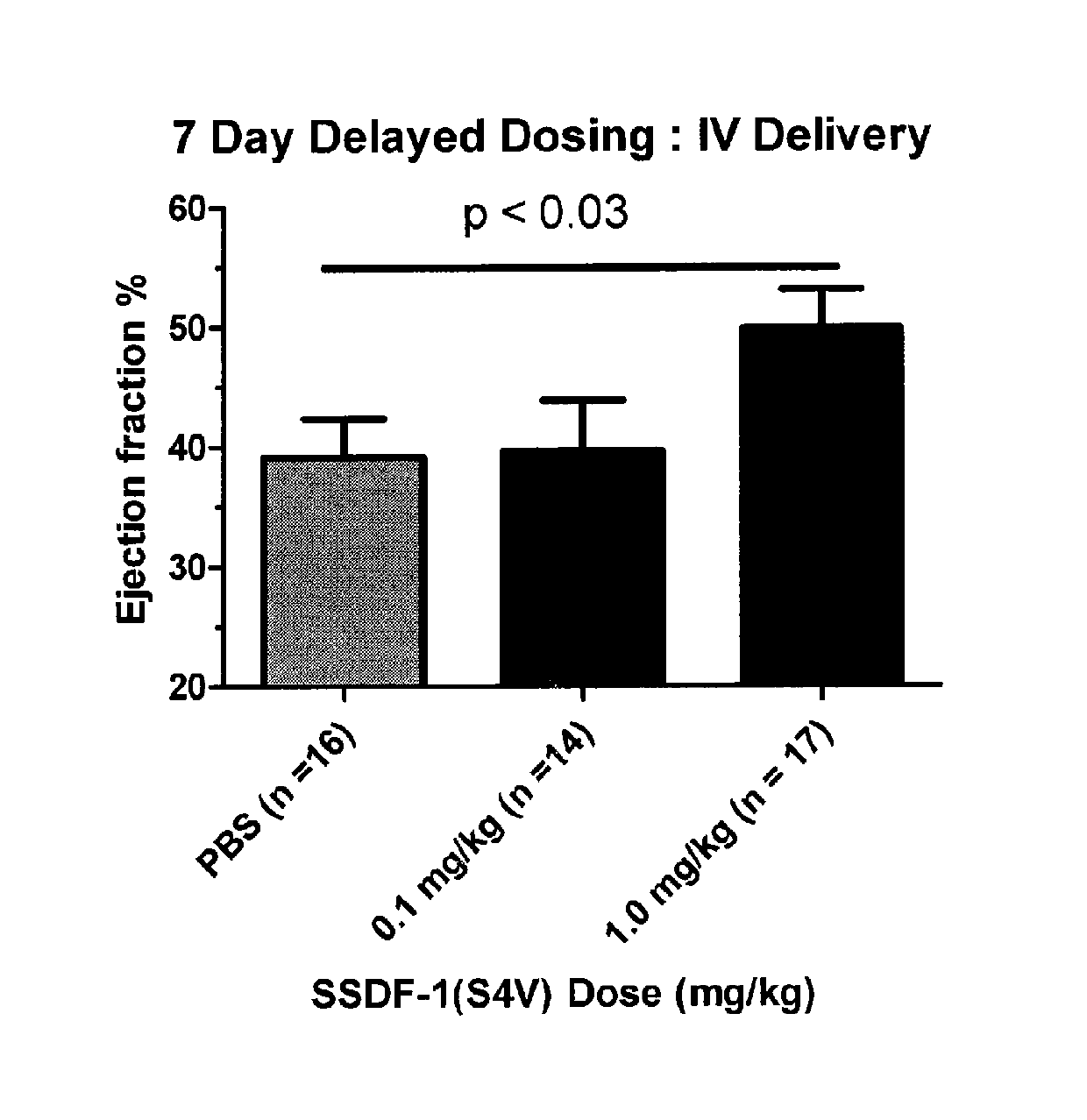Methods for repairing tissue damage using protease-resistant mutants of stromal cell derived factor-1
a technology of protease-resistant mutants and stromal cells, which is applied in the direction of drug compositions, peptide/protein ingredients, metabolic disorders, etc., can solve the problem of insufficiency of the naturally occurring myocardial repair process, and achieve the effect of treating or reducing the likelihood of tissue damag
- Summary
- Abstract
- Description
- Claims
- Application Information
AI Technical Summary
Benefits of technology
Problems solved by technology
Method used
Image
Examples
example 1
Delayed and IV Dosing of Protease Resistant SDF-1 Variants Improve Cardiac Function in a Rodent Ischemia Reperfusion Model
[0110]In the following example, we describe experiments demonstrating that intravenous delivery and long term delayed dosing of an mSDF-1 peptide-containing composition improves cardiac function in an ischemia reperfusion model.
[0111]Rats were anesthetized with 0.05 mg / kg of buprenorphine and 2-3% of isoflurane. After intubation, the chest was opened between ribs 4 and 5, and the left anterior descending (LAD) coronary artery was ligated for 90 minutes. After 90 minutes, the suture was removed from the LAD to initiate reperfusion in the infarct zone. The chest and skin of the rats were then closed. mSDF-1 peptide was administered by intravenous injection 7 days post infarction (>15 rats per group). For intravenous injection, 100 μl of S-SDF-1 (S4V) (at doses of 0, 0.1, and 1.0 mg / kg) in PBS were injected into the tail veins of rats.
[0112]In each of the experiment...
PUM
| Property | Measurement | Unit |
|---|---|---|
| time | aaaaa | aaaaa |
| time | aaaaa | aaaaa |
| time | aaaaa | aaaaa |
Abstract
Description
Claims
Application Information
 Login to View More
Login to View More - R&D
- Intellectual Property
- Life Sciences
- Materials
- Tech Scout
- Unparalleled Data Quality
- Higher Quality Content
- 60% Fewer Hallucinations
Browse by: Latest US Patents, China's latest patents, Technical Efficacy Thesaurus, Application Domain, Technology Topic, Popular Technical Reports.
© 2025 PatSnap. All rights reserved.Legal|Privacy policy|Modern Slavery Act Transparency Statement|Sitemap|About US| Contact US: help@patsnap.com

